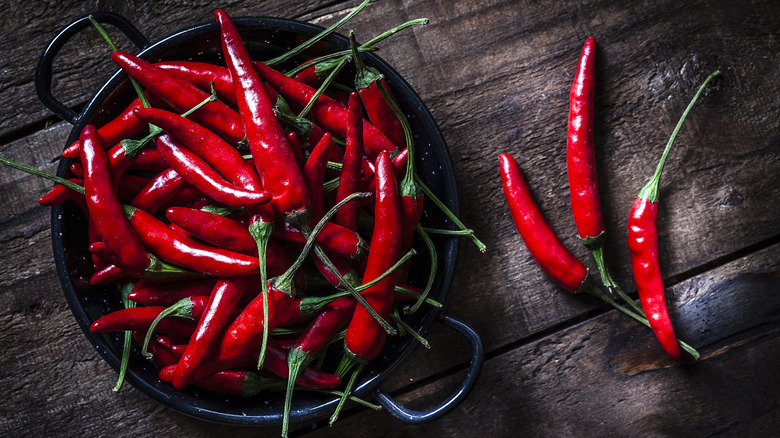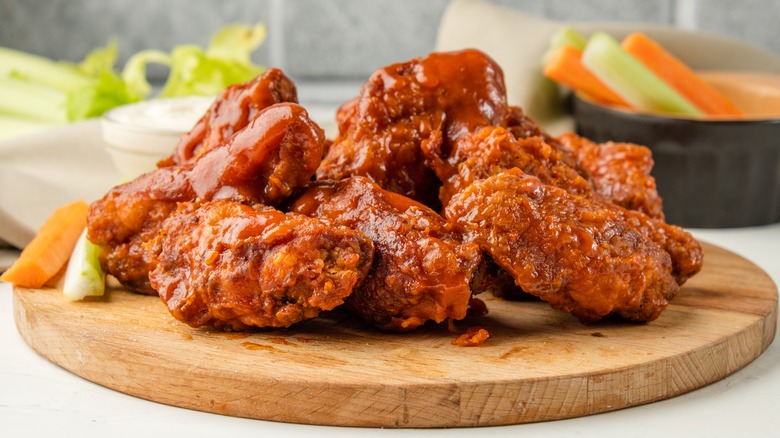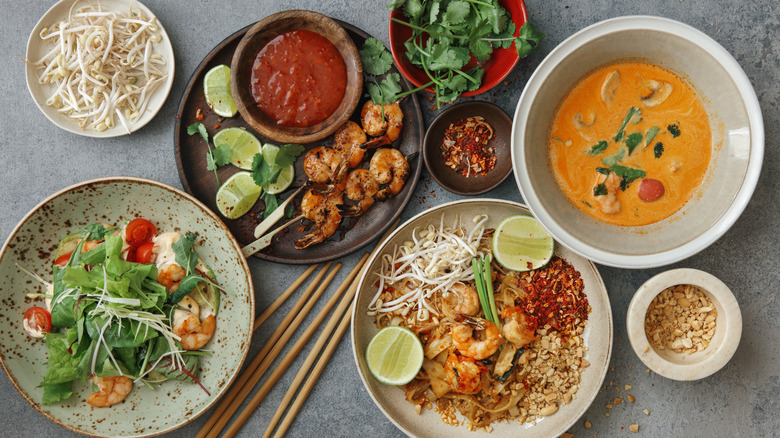Yes, You Can Increase Your Spice Tolerance. Here's How
Spicy food is an integral part of countless cuisines around the globe. By using ingredients like hot peppers and fiery spices, chefs construct incredible dishes that excite the senses and tantalize the taste buds in a way sweet or sour foods often can't. Along with being a flavor powerhouse, some studies have even shown that spicy food can actually provide health benefits. However, a low spice tolerance can make it difficult for some people to work past the somewhat painful nature of spicy food and enjoy all its positive qualities. There are plenty of reasons to try and increase one's spice tolerance — whether you're traveling to a region where peppery dishes are the norm, or simply want to push your palate, strengthening your resistance to spicy flavors is a worthwhile endeavor that can be accomplished with some patience and a few simple techniques.
The most important advice when it comes to improving your spice tolerance is to start slow. Going straight from garlic parmesan wings to those doused in ghost pepper hot sauce is a recipe for disaster. Instead, look for ways to gradually introduce heat into your diet. As you acclimate to the food, kick up the spice bit by bit until your tolerance reaches a level you're happy with.
Infusing spice into your diet
When you embark on your journey towards spicier eating, start with foods that rank low on the Scoville scale. By assessing the quantity of heat-causing capsaicin within a pepper, the Scoville scale is a good tool for figuring out just how much spice you can take. Towards the bottom of the scale are things like sweet peppers, poblano peppers, and paprika, as well as less aggressive hot sauces like Frank's Red Hot and Valentina. Infusing your meals with more spice can be as easy as adding a dash of a mild hot sauce to your scrambled eggs, or adding a few sliced poblanos to your fajitas.
Once you've gotten more comfortable with mild spiciness, you can take things up a notch. Jalapeño and serrano peppers, Tabasco and Sriracha sauce, and cayenne spice are all considered to be in the medium zone of hotness, and can be mixed into recipes just as you did with less spicy entrées. A sprinkle of cayenne on macaroni and cheese can pick up the heat as it cuts through the richness, while a spoonful of Sriracha is a surefire way to spicily upgrade a bowl of instant ramen. Keep spiking your food with spicier and spicier peppers and sauces, and eventually you'll be handling the heat like a pro.
More tips for eating spicy
Think of increasing your spice tolerance as physical exercise. Like any workout, it's crucial to take care of your palate so you're able to enjoy more spice in the long run. One way to do this is to get familiar with all the foods that work to counteract the pain of too much spice. Plain Greek yogurt can perfectly cut through the heat of various curries, and sour cream can take the bite out of spicy salsas and other sauces. Acidic elements like cilantro and lime can also ease the spicy burn.
Throughout the process, don't be afraid to push yourself every now and then by indulging in something that you think might be too spicy for you. At the same time, don't be discouraged if you're not able to increase your tolerance as much as you want. A person's spice tolerance is influenced by a number of factors, including genetics, so there's no shame if you can't eat as spicy as someone else. If you are able to, increasing your spice tolerance can open the doors to a whole new realm of food. If you really want to test your limits, you could even find yourself chomping down on a ghost pepper or Carolina Reaper one day. At the very least, you'll be able to enjoy the spiciest offerings from Thai and Indian restaurants and impress your friends with your taste buds of steel.


